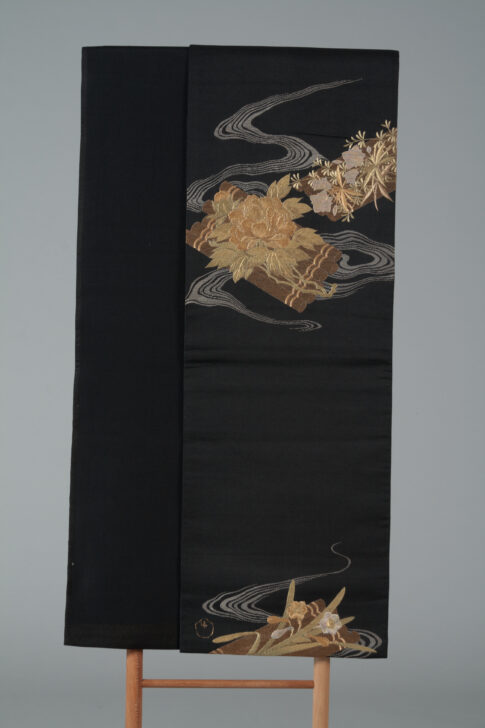Obi
Japanese

Description
Subject Matter:
The floral rafts contain several recognizable flowers such as peonies and daffodils.
This is a Nishijin, and Fukuro obi in Otaiko gara.
Nishijin-ori textiles were developed in the Nishijin area of Kyoto city and has dominated the production of high-quality woven textiles since the fifteenth century. Fukuro Obi is double-layered single sided obi in which two separately woven surfaces and back pieces of cloth are stitched together. This type of obi is typically only worn at weddings or other formal occasions. Gara refers to the orientation, arrangement, and surface area of the patterns and pertains to a specific trend and obi tying style. The patterning in the Otaiko gara type is minimal. A few concentrated spots of patterned motif lie on the obi while the rest is left blank. This style was invented during the Edo period (1615-1868) by the female entertainers in Fukugawa, an entertainment district in present-day Tokyo.
Physical Description:
Black Fukuro (double-sided) obi with interwoven light brownish gray swirling water ripples and brown rafts with embroidered gold and yellow flowers.
Usage Rights:
If you are interested in using an image for a publication, please visit https://umma.umich.edu/request-image/ for more information and to fill out the online Image Rights and Reproductions Request Form.